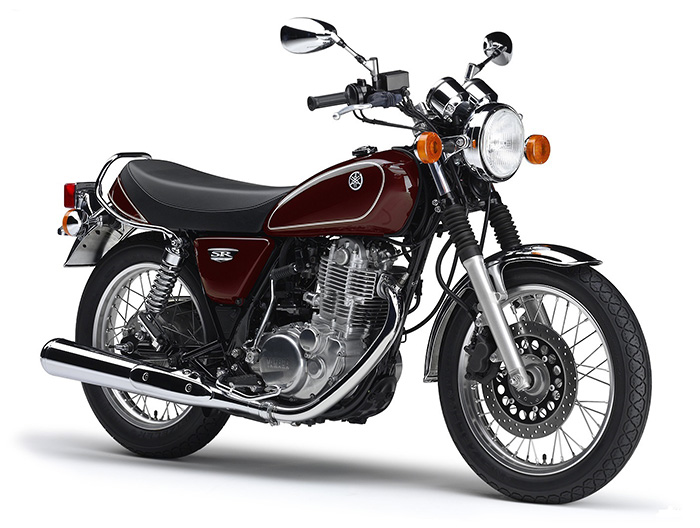Forty Years of Admiration for the Big Single
Introducing the stories behind Yamaha Motor's technologies.

Among Yamaha’s motorcycle lineup in 1976, there was a model with big single-cylinder engine: the XT500 dual-purpose machine. What grew out of this model was both on-road and off-road iterations, and are now “engine brands” that symbolize Yamaha. The on-road version became the “SR,” while the off-road version became the “Ténéré.” Both of these had their beginnings in the deserts and vast open terrain of the United States.
On the American West Coast in the 1970s, enduro riding that involved traversing the vast plains and deserts of the country over several hours was popular among young riders. Yamaha was only selling 2-stroke models at the time and there were clear calls from the market for a 4-stroke model. To answer this demand, Yamaha developed the enduro-specific TT500 model. Designed, developed and released alongside the TT500 was the XT500. Customers wanted powerful torque for enduro competition and the torque of a large-displacement single-cylinder engine was the key to deliver this. The initial prototype meant for desert riding was sent to the U.S. for testing. At the time, it was not common practice to test new machines in the environments in which they would be used, so this was a new challenge. Some 2.5 times the amount of standard testing was conducted for continuous full-throttle riding. This rigorous testing process under extreme conditions stressed the piston and connecting rod to point of failure, so that Yamaha engineers could find and eliminate any shortcomings, and ensure the reliability of the machine.
The XT500 found a particularly strong following in France and Italy as a machine for beach rallies and the desert rallies of West Africa. An XT500 rider won the first Paris-Dakar Rally in 1979 as well as the second, soon turning it into the rally machine of choice. After that, the Paris-Dakar became an FIM-sanctioned race and various manufacturers and teams joined the event. The competition became much more intense and when the key to winning became all-out top speed, the XT500 evolved into the 4-valved XT550, and later, the XT600 Ténéré equipped with a big 30-liter fuel tank. “Ténéré” refers to a desert in Niger and Chad that covers over 400,000 square kilometers. From the 1980s, the “Ténéré” model name grew to represent Yamaha’s adventurous spirit in crossing such a landscape and is an icon loved by many motorcyclists and fans. The XT Series later underwent several innovations, such as the switch to a 5-valve engine and the introduction of fuel injection. The current XT660Z Ténéré model (#1) continues to be a popular choice today.
On the other hand, following the release of the XT500, the market began calling for an on-road model with the same engine. In response, Yamaha introduced the SR400 and SR500 models in 1978. The XT500’s engine was used as a base but detail specs were modified to make it more suitable for street use. The straightforward handling characteristics from the machine’s slim chassis and the pulsating sensation of the single-cylinder engine made it a hit with consumers. Deliveries of the SR500 to Europe were suspended in 1995, but it still has a cult following in Germany today. The SR400 (#2) on the other hand continues to be sold to this day in Europe, Australia, the U.S., Thailand and Japan. Its enduring popularity is due to its timeless looks and the tangible feeling of pulse from its engine.
Throughout its long history, there have been times when ceasing production of the SR has been considered. In the world of ever more technologically complex motorcycles, the SR’s simple single-cylinder engine and classic styling are what define the model and its presence among motorcycles. While developing new products is important, models like the SR have to be carried on because its character is truly one of Yamaha’s assets. This is the decision that kept the SR on the production line. The SR has kept the same styling since the first-generation model rolled off the line over 30 years ago, and can still be seen on the streets today.
Related Link
Off-road Mania Chapter IV: From the Desert Sands: Ténéré

